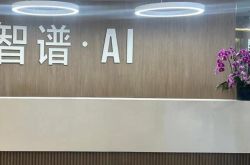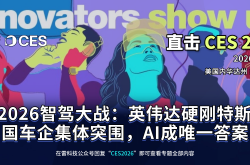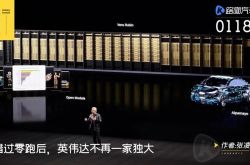From Honeymoon to Shadow War: The Fracturing Alliance Between OpenAI and Microsoft
![]() 06/27 2025
06/27 2025
![]() 585
585
The "AI golden couple" of OpenAI and Microsoft has reached a pivotal juncture. According to Phoenix Tech, citing foreign media reports, OpenAI has recently deliberated on publicly accusing Microsoft of anti-competitive practices within their partnership, with some senior executives even discussing the possibility of seeking federal regulatory intervention to re-evaluate their collaboration agreement.
This move could jeopardize their six-year-old partnership, widely hailed as one of technology's most successful collaborations. For years, Microsoft's investments have propelled OpenAI's rise, in exchange for early access to its technology. However, as both entities have transformed into competitors, finding common ground has become increasingly challenging.
01. The End of the Honeymoon: From Strategic Alliance to Strategic Suspicion
Microsoft's investment in OpenAI began in 2019, amidst financial and computational challenges faced by the latter, shortly after Tesla founder Elon Musk stepped down. To attract investment, OpenAI, initially a "non-profit organization," established a for-profit subsidiary, "OpenAI LP," to raise funds and attract talent through equity in a startup company.
This transformation swiftly led to a $1 billion investment from Microsoft. The agreement stipulated that Microsoft would provide OpenAI with a total of $1 billion, including cash and Azure cloud computing resources, to support its R&D and model training. In return, OpenAI had to migrate its services to Microsoft's Azure cloud platform, making Microsoft its exclusive cloud provider. Microsoft also gained exclusive access to OpenAI's technology and a 20% share of its revenue, with the agreement valid until 2030.
This partnership was initially seen as a perfect match. Microsoft sought OpenAI's cutting-edge AI capabilities to rejuvenate its product line, while OpenAI desperately needed Microsoft's funds and cloud resources to sustain its astronomical R&D costs.
The stock market's performance further validated the partnership's potential. In November 2022, OpenAI ignited a generative AI revolution with ChatGPT, forcing tech giants like Alphabet and Meta to revamp their product strategies. Microsoft's collaboration with OpenAI transformed it from a stalwart tech company into a leader in the modern AI boom.
The initial phase of their cooperation was indeed harmonious: Microsoft integrated ChatGPT into Bing search to challenge Google, while OpenAI leveraged Azure supercomputers to push the boundaries of GPT models.
However, rifts may have emerged in 2024. Last November, the OpenAI board abruptly removed CEO Sam Altman, though he was reinstated days later. This incident marked a turning point in Microsoft's attitude. Four sources revealed that Nadella and Microsoft began reassessing further investment plans for OpenAI.
Microsoft's concerns extended beyond governance risks to potential business competition. As OpenAI's valuation soared to nearly $100 billion, the pressure to generate profits intensified. It began launching enterprise-level services and AI search products that directly competed with Microsoft, evolving from a mere "technology provider" to a comprehensive competitor.
02. Philosophical Divide: The Battle for AGI Definition Rights
Moreover, the crux of their conflict transcends commercial interests, touching on differing understandings of AI's essence. The parties had a so-called "AGI clause": once OpenAI develops general artificial intelligence, Microsoft will lose access to the technology.
The problem lies in the AGI definition rights being solely in OpenAI's hands. Altman once admitted publicly: "The closer we get to AGI, the harder it is for me to say how far away it is, because I think it will become more ambiguous." This subjective criterion left Microsoft anxious—its substantial investment could be significantly devalued by a single OpenAI statement.
The disagreement over the technological path erupted publicly at the Davos Forum. Suleyman questioned Altman's optimistic assessment of hardware capabilities: "I don't think NVIDIA GB200s can achieve AGI, and any definitive assertion is unfounded."
03. Industrial Chain Restructuring: Seeking Alternatives
As the rift widens, both OpenAI and Microsoft are exploring alternatives. Over the past year, OpenAI has repeatedly attempted to negotiate with Microsoft to reduce costs and allow it to purchase computing resources from other companies. In June this year, Microsoft agreed to include a special clause in the contract, permitting OpenAI to sign a computing agreement worth approximately $10 billion with Oracle for additional resources.
Microsoft is also seeking alternatives. Reports indicate that Microsoft has developed its own AI inference model, MAI, designed to compete with OpenAI's core models like GPT-1 and GPT-3-mini. This move aims to reduce technical dependence on OpenAI and enhance Microsoft's independent AI innovation capabilities. Microsoft also plans to offer the MAI model through API to further expand its market influence.
This split is reshaping the global AI infrastructure landscape. For OpenAI, a diversification strategy is crucial for survival. When commercial negotiations stall, regulatory forces become a new variable. As mentioned, OpenAI is considering filing an antitrust complaint with the Federal Trade Commission (FTC), accusing Microsoft of unfair competition through contractual terms.
The timing of playing this "regulatory card" is strategic. Global antitrust agencies are closely monitoring tech giants' AI expansions. The UK's Competition and Markets Authority (CMA) initiated an assessment of the Microsoft-OpenAI partnership in 2023, and the US Department of Justice is investigating whether tech giants control startups through "interlocking boards of directors."
For Microsoft, this threat strikes at the heart of its AI strategy. Analysts estimate that about 40% of Microsoft's $22 billion in AI service revenue is tied to OpenAI technology. A complete breakdown in cooperation could lead to a 4% decrease in Microsoft's earnings per share for fiscal year 2026.
OpenAI's demands are clear: use regulatory pressure to force Microsoft to abandon restrictive contract clauses, particularly those regarding cloud service exclusivity and governance veto rights. A former regulatory official noted: "If OpenAI convinces regulators that Microsoft is suppressing competition through exclusive agreements, it could set a precedent for all tech startups collaborating with giants."
04. Conclusion: Business Has No Permanent Friends
In summary, OpenAI and Microsoft, once celebrated as the "perfect match" of the AI golden couple, are experiencing an unprecedented rift in their cooperation. From initial strategic complementarity and harmony to the current quagmire of commercial competition, philosophical differences, and regulatory games, their relationship has shifted from "strategic alliance" to "strategic suspicion." Microsoft's substantial investment and infrastructural support once propelled OpenAI to success but also sowed the seeds of conflict of interest and power imbalance. OpenAI seeks independent development and absolute discourse power in AGI definition, while Microsoft aims to safeguard its investment returns, market position, and reduce core dependence. When commercial negotiations fail, resorting to regulatory forces becomes a possible nuclear option for OpenAI. This not only challenges Microsoft's contractual terms but may also set a new regulatory precedent for the collaboration mode between giants and startups across the tech ecosystem.
Regardless of whether this conflict ends in reconciliation, reorganization, or open confrontation, its impact extends far beyond the two companies. It signifies an accelerated restructuring of the AI industry, where the fragile symbiotic relationship between giants and top AI labs faces reconstruction, forcing the entire industry to re-examine technological dominance, business ethics, and antitrust boundaries. The internal disagreement within this "golden couple" may reshape the future path and rules of AI development.
- End -



